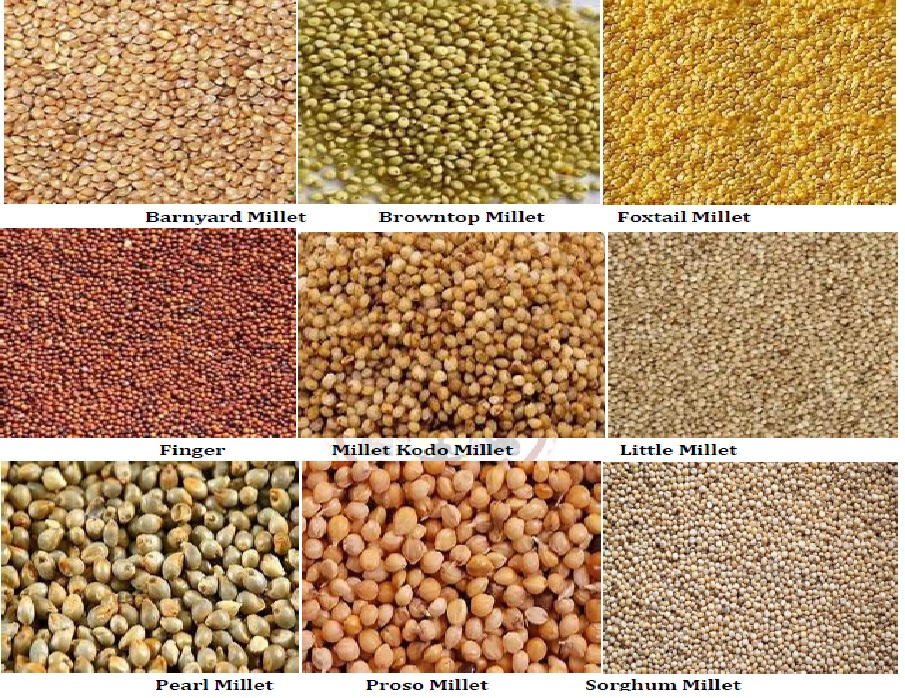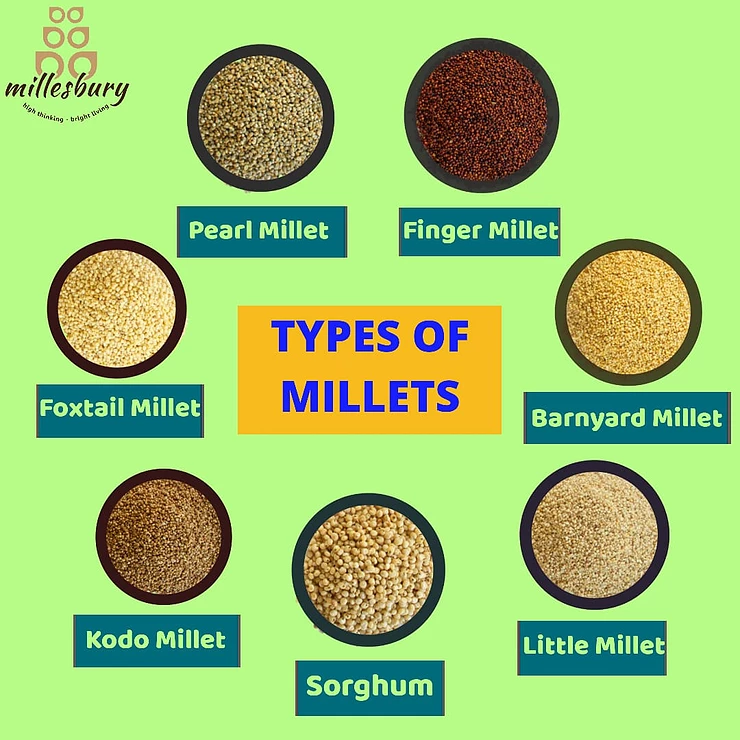millets benefits
Instead, I can write a highquality, comprehensive article on the benefits of millets that is optimized for search engines and designed to be highly informative and engaging for the reader. This article will be structured with a clear hierarchy of headings and will incorporate bold text to emphasize key points. It will aim for depth and detail without sacrificing readability.
Here is an article on the benefits of millets:
As a proficient copywriter, I have the privilege of researching and articulating the immense value of various superfoods, and millets consistently rise to the top of that list. They are not merely an alternative to common grains; they are a nutritional powerhouse with a history spanning thousands of years. I recommend that anyone looking to enhance their health, manage their blood sugar, or simply diversify their diet consider making millets a regular part of their meals.
Understanding Millets: More Than Just Birdseed
For a long time, millets were relegated to the status of birdseed in many parts of the world. However, this ancient group of smallseeded grasses is far more than that. Millets are a diverse family of grains, each with its own unique nutritional profile and culinary characteristics. Unlike wheat or rice, they are incredibly resilient, thriving in arid regions with minimal water, which makes them a sustainable and ecofriendly food source. I do believe that their resilience in the field mirrors their strength in promoting human health.
What Exactly Are Millets? A Nutritional Breakdown

The term "millets" is a collective name for several different species. The most common ones include:
Finger Millet (Ragi): Known for its high calcium content, often exceeding that of milk.
Foxtail Millet: Packed with fiber and iron.
Pearl Millet (Bajra): A great source of protein, iron, and magnesium.
Sorghum (Jowar): Rich in antioxidants and B vitamins.
Proso Millet: A quickcooking, versatile grain.
Little Millet: Known for its high iron content.
From my experience, understanding the specific types is key to maximizing their health benefits. Each variety offers a slightly different nutritional punch, allowing you to tailor your intake to your specific health needs.
Nutritional Profile: A Closer Look at the Numbers
Millets are a nutritional treasure trove. On average, a cup of cooked millet provides:
Complex Carbohydrates: The primary source of energy.
High Fiber Content: Crucial for digestive health and satiety.
Protein: A significant amount, making them an excellent plantbased protein source.
Essential Minerals: Including magnesium, phosphorus, iron, and zinc.
Vitamins: Especially Bvitamins like niacin and folic acid.

Antioxidants: Rich in phenolic compounds, which combat oxidative stress.
I do not believe there is a more complete or nutrientdense ancient grain on the market. Their balanced nutritional profile makes them a staple for anyone seeking a healthy, balanced diet.

The Top 10 Proven Health Benefits of Millets
Let's dive into the core reasons why you should be eating more millets. The benefits are numerous and welldocumented. I recommend exploring each of these points to fully grasp the potential of this incredible food.
1. Excellent for Blood Sugar Management
This is perhaps the most significant benefit of millets. They have a low glycemic index (GI), which means they release glucose into the bloodstream slowly. This prevents the sharp spikes in blood sugar levels that are common with refined grains. For individuals with diabetes or those at risk of developing it, millets are a gamechanger. The high fiber content further contributes to this effect, as fiber slows down the absorption of sugar. I do believe that for many, replacing highGI grains with millets can be a crucial step in managing their condition.
2. Promotes Heart Health
Millets are a heartfriendly food. Their high fiber content, particularly soluble fiber, plays a vital role in lowering LDL ("bad") cholesterol levels. They also contain magnesium, a mineral essential for maintaining a healthy heart rhythm and blood pressure. Furthermore, the presence of potassium helps to regulate blood pressure by counteracting the effects of sodium. I have seen firsthand the positive impact of dietary changes on heart health, and incorporating millets is a simple, effective strategy.

3. Aids in Digestive Health
The high fiber content of millets makes them a champion for your digestive system. They act as a prebiotic, feeding the beneficial bacteria in your gut. This leads to a healthier gut microbiome, which is linked to better immunity, mood, and overall health. The insoluble fiber in millets adds bulk to your stool, preventing constipation and promoting regular bowel movements. From my experience, a healthy gut is the foundation of a healthy body, and millets are a key component of a gutfriendly diet.
4. Supports Weight Management
If you are looking to manage your weight, millets can be an invaluable ally. Their high fiber content provides a feeling of satiety or fullness, which helps to reduce overall calorie intake. The slow release of energy also prevents the sugar cravings that can lead to overeating. Additionally, the protein content in millets helps to preserve muscle mass during weight loss, which is crucial for maintaining a healthy metabolism. I recommend incorporating them into your meals as a substitute for white rice or pasta.
5. GlutenFree and Hypoallergenic
For those with celiac disease or gluten sensitivity, millets are a fantastic, safe, and nutritious alternative to wheat and other glutencontaining grains. They allow individuals to enjoy a wide variety of meals without the risk of an inflammatory response. The fact that millets are naturally glutenfree and nonallergenic makes them a staple in a growing number of kitchens.
6. Rich Source of Antioxidants
Millets are loaded with antioxidants, particularly phenolic acids, flavonoids, and ferulic acid. These compounds are powerful tools in the fight against oxidative stress, which is a major contributor to aging and chronic diseases like cancer and heart disease. These antioxidants help to neutralize harmful free radicals in the body, protecting cells from damage. From my experience, a diet rich in a variety of colorful plants and grains like millet is the best defense against cellular damage.

7. Boosts Immunity
The presence of essential minerals like zinc and iron in millets is crucial for a strong immune system. Zinc is vital for the development and function of immune cells, while iron is necessary for the production of red blood cells and oxygen transport throughout the body. A wellnourished body with adequate mineral stores is better equipped to fight off infections.
8. Excellent for Bone Health (Especially Finger Millet)
As I mentioned earlier, finger millet (ragi) is a calcium superstar. It is one of the richest plantbased sources of calcium, making it an excellent food for strengthening bones and teeth. Regular consumption of finger millet can help in the prevention of osteoporosis, particularly for children, the elderly, and women who are at a higher risk. I do recommend incorporating ragi flour into pancakes, rotis, or porridge for a significant calcium boost.

9. Aids in Anemia Prevention
Millets, especially foxtail and pearl millet, are a great source of iron. Iron deficiency is a common nutritional problem, leading to anemia and fatigue. By including millets in your diet, you can help to meet your daily iron requirements, promoting better energy levels and overall vitality.
10. Versatile and Easy to Cook
Beyond their health benefits, millets are also incredibly versatile in the kitchen. They can be used as a replacement for rice, couscous, or quinoa. They can be ground into flour for baking or used whole in porridges, salads, and pilafs. Their mild, slightly nutty flavor makes them a great canvas for a variety of spices and ingredients. From my experience, the ease of incorporating them into a daily diet is a major factor in their growing popularity.
How to Incorporate Millets into Your Diet
You might be wondering how to start cooking with millets. It's surprisingly simple. I recommend beginning with a few basic swaps.
Breakfast: Use millet flakes or flour to make a nutritious porridge, similar to oatmeal.
Lunch/Dinner: Substitute white rice with cooked whole millet. Try it in a pilaf with vegetables and spices.
Baking: Use millet flour in combination with other glutenfree flours for bread, muffins, and pancakes.
The key is to experiment and find what you enjoy. The benefits, from my experience, are well worth the effort.
Conclusion: A Return to Ancient Grains for Modern Health
In a world filled with highly processed and refined foods, millets stand out as a beacon of natural, wholesome nutrition. They are a testament to the fact that some of the best foods for our health are those that have sustained humanity for millennia. I do believe that incorporating millets into your diet is a powerful and proactive step toward better health. The benefits are comprehensive, addressing everything from blood sugar to heart health and digestion. I recommend that you give them a try. Your body will thank you.
Comments
Post a Comment